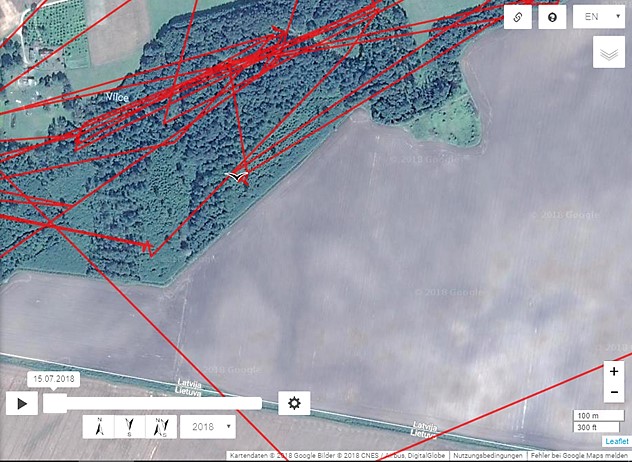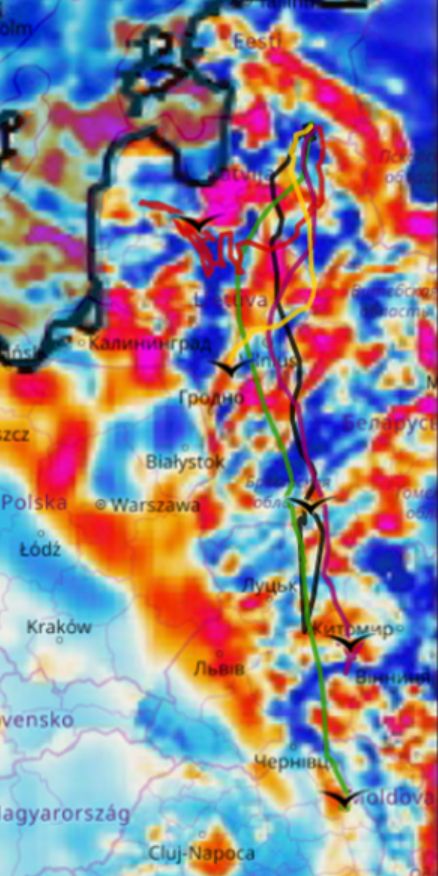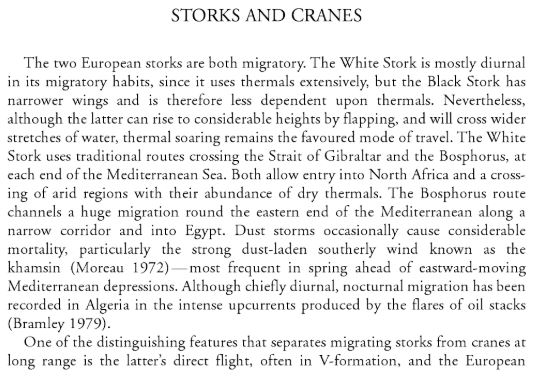"How migratory birds find their way" is still not (completely) understood by scientists.
Some interesting articles about bird migration:
http://www.educapoles.org/news/news_det ... _their_way
How do migratory birds find their way ?
"
This question still interests many scientists. It has been showed that birds use
several orientation tools.
They can use
the sun, for example, which means that they permanently "know" what time it is, in order to know the right direction on the basis of the sun's position. They are also sensible to the
ultraviolet rays which penetrate the clouds but are invisible for human beings. (So they see the sun's position also on a cloudy day.) Even the nocturnal birds use the position of the sun at sunset to know their position.
Nocturnal birds also use
the stars. This has been proved by letting birds fly in a planetarium and changing the stars' position.
Another tool is the
earth's magnetic field (earth's north and south magnetic poles). Some birds, like pigeons, have a small zone in their brain made of magnetite (magnetic mineral), just like a small compass. But other scientists think it's rather in their eyes that some birds have a system which indicates them where the magnetic north is...
Of course, (experienced) birds also use their
knowledge of the landscape: they follow rivers, valleys or roads, or locate themselves with particular mountain peaks.
Other tracks are still to be explored. For example, it seems that
some birds could find their way by following
their sense of smell. ..."
http://theconversation.com/migrating-bi ... nces-82624
Migrating birds use a magnetic map to travel long distances
"Birds have an impressive ability to navigate. They can fly long distances, to places that they may never have visited before, sometimes returning home after months away.
Though there has been a lot of research in this area, scientists are still trying to understand exactly how they manage to find their intended destinations. ..."
https://www.scienceabc.com/nature/how-m ... field.html
Vision-based magnetoreception
"One of the more complicated theories to explain avian migration involves bird species’ ability to detect the magnetic fields of the Earth, and subsequently follow those fields to their ultimate destination. This ability to use “invisible” waves was hard for some ornithologists to swallow, but it was proposed that some bird beaks contain magnetic particles that act as a compass. Recently, this theory has fallen out of fashion, replaced by the theory of vision-based magnetoreception.
The concept of vision-based magnetoreception means that
birds can “see” magnetic fields and align themselves with the direction of the field they want to travel. If a bird is migrating south, it will align with a south-facing magnetic field and be on its way. Experiments in laboratories have actually generated artificial “magnetic south”, and birds moved in that direction. ..."
A Quantum Explanation?
"The last great mystery to vision-based magnetoreception is how this sort of magnetic field sensor can be present inside a bird’s retinal cells. One of the most recent theories suggests that quantum mechanics may provide the answer. For such a detector of strength AND direction, some mechanism would need to be in place to amplify the relatively weak magnetic effects of the Earth enough to be detected.
In quantum mechanics, a radical pair consists of two simultaneously created molecules, each with one electron of opposing, associated spin that makes these pairs highly sensitive to outside forces and magnetic fields.
When a specific light-sensitive protein found in the
retinal cells of birds, cryptochrome, is exposed to certain wavelengths of green or blue light, it can organically create these radical pairs. Magnetoreception like this is the latest field of quantum biology, and one that is currently being studied around the world."
A recent, interesting article about bird's senses of
smell and
taste:
http://www.startribune.com/turns-out-bi ... 485946142/
Birds’ sensory lives are very different from our own.
Turns out birds can smell and taste after all.
"
Recent studies show birds have a broad sensory palette, shooting earlier theories out of the water. ..."















